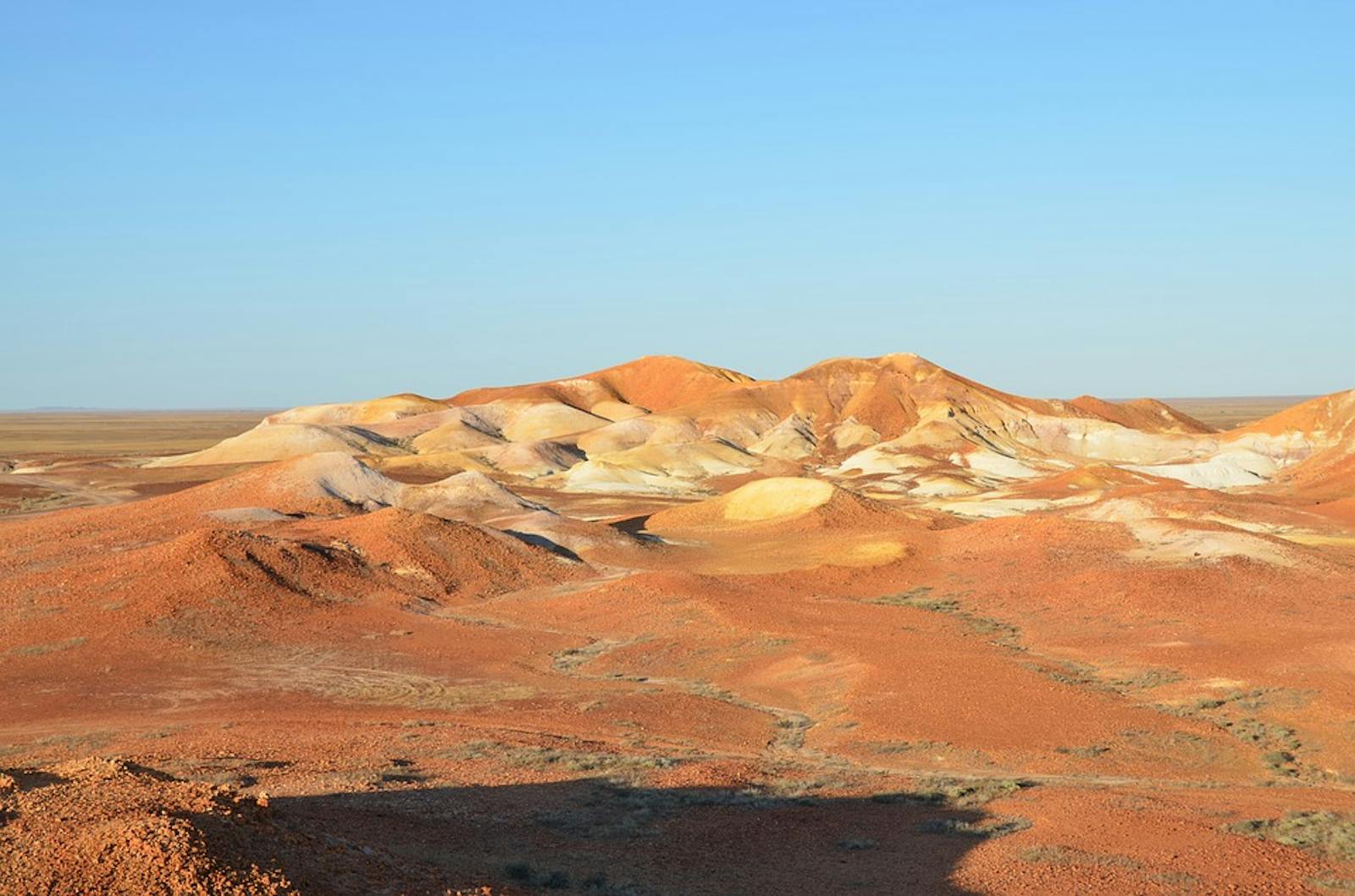Tirari-Stuart Stony Desert
The ecoregion’s land area is provided in units of 1,000 hectares. The conservation target is the Global Safety Net (GSN1) area for the given ecoregion. The protection level indicates the percentage of the GSN goal that is currently protected on a scale of 0-10. N/A means data is not available at this time.
Bioregion: Greater Australian Interior Desert & Shrublands (AU7)
Realm: Australasia
Ecoregion Size (1000 ha):
30,908
Ecoregion ID:
215
Conservation Target:
59%
Protection Level:
2
States: Australia
Ancient gibber pebble plains, sand dunes, ephemeral gilal lakes, salt lakes, and xeric grasslands cover the Tirari-Sturt stony desert, one of the driest areas of Australia. Wedge-tailed eagles, small predatory marsupials such as the kowari and crest-tailed mulgara, pardalotes, and honeyeaters thrive in this tough environment.
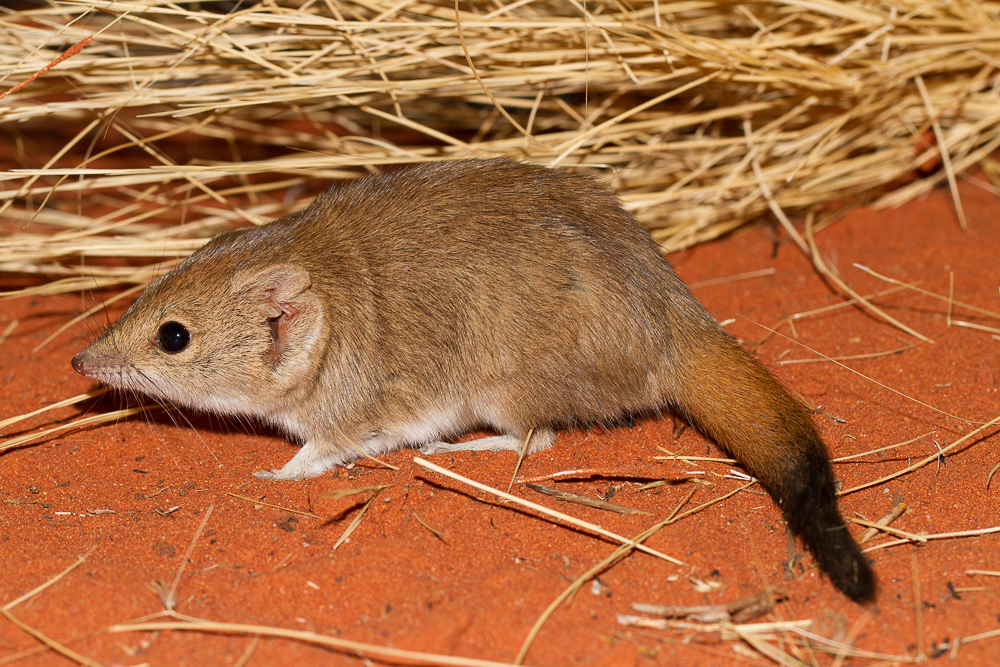
The flagship species of the Tirari-Stuart Stony Desert ecoregion is the crest-tailed mulgara. Image credit: Creative Commons, Bobby Tamayo, Simpson Desert, QLD
The climate in this region is dry and hot, with the temperature in summer reaching 50°C. Away from the barren gibber plains, the vast desert supports chenopod shrublands, belah and mallee open woodlands, mulga woodlands and scrubland, sand dune grasslands, and gilgal, ephemeral lakes that draw in birds and other wildlife when wet. Sandhill wattle (Acacia ligulata) and sandhill sane-grass (Zygochloa paradoxa) occur on the crests and slopes of dunes. After rains, there is abundant growth of grasses and herbs on the dunes. In drier floodplains one finds Old Man saltbush (Atriplex nummularia), cottonbush (Maireana aphylla), and Queensland bluebush (Chenopodium auricomum) in sparse, open shrublands. In more persistent swamps and depressions one can find swamp cane grass (Eragrostis australasica) and lignum (Muehlenbeckia florulenta).
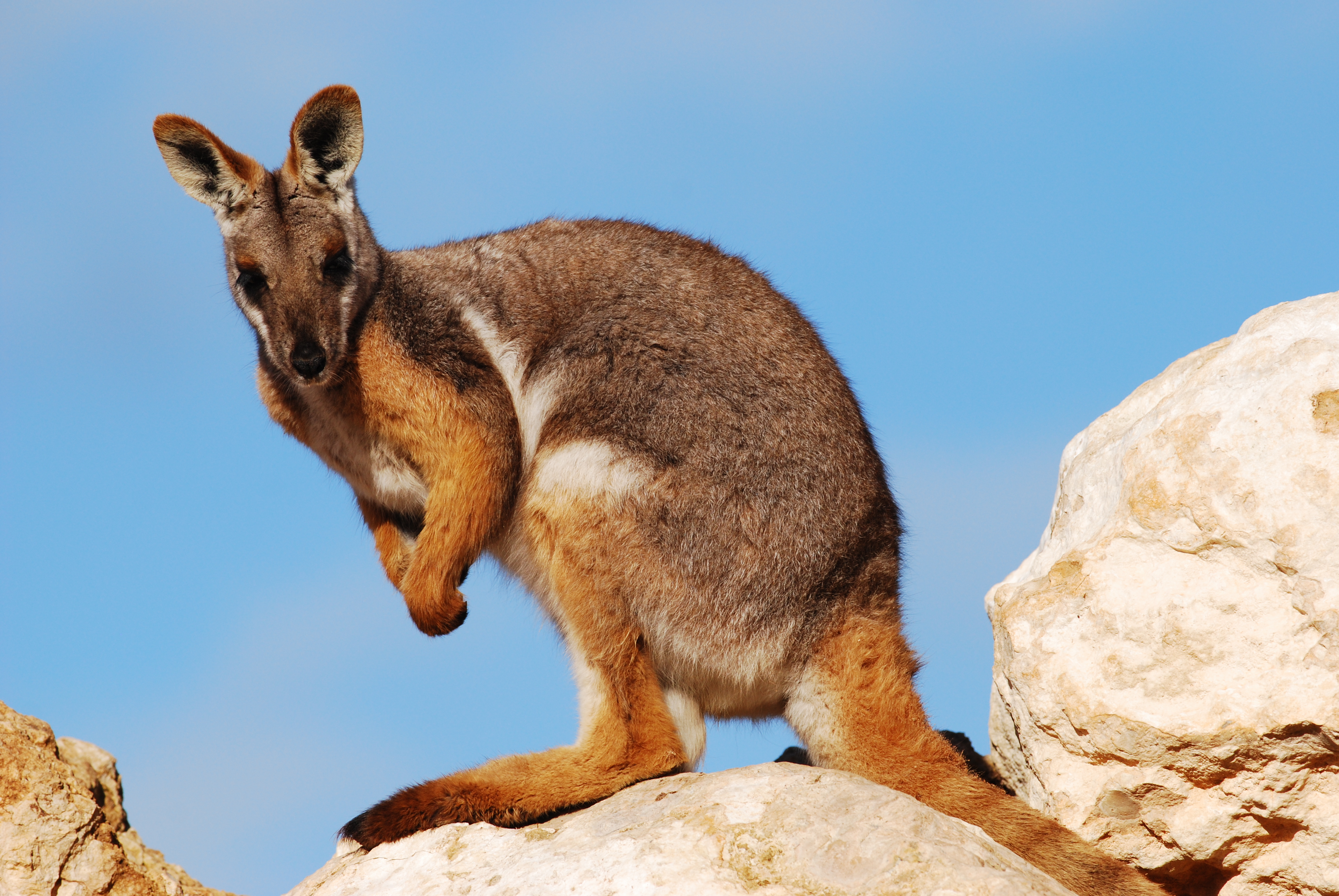
Yellow-footed rock wallaby. Image credit: Creative Commons
Along intermittent watercourses and permanent waterholes associated with tributaries of Cooper Creek there are woodlands dominated by river red gum (Eucalyptus camaldulensis) and coolibah (Eucalyptus coolabah). The Haegi’s Stemodia with small blue-purple flowers and Johnston’s slipper plant is endemic. The desert also hosts endemic fauna, including the Pickard’s wattle (Acacia pickardii), kowari (Dasyuroides byrnei), fawn hopping-mouse (Notomys cervinus), stony Downs skink (Ctenotus Astarte), and plains wanderer (Pedionomus torquatus).
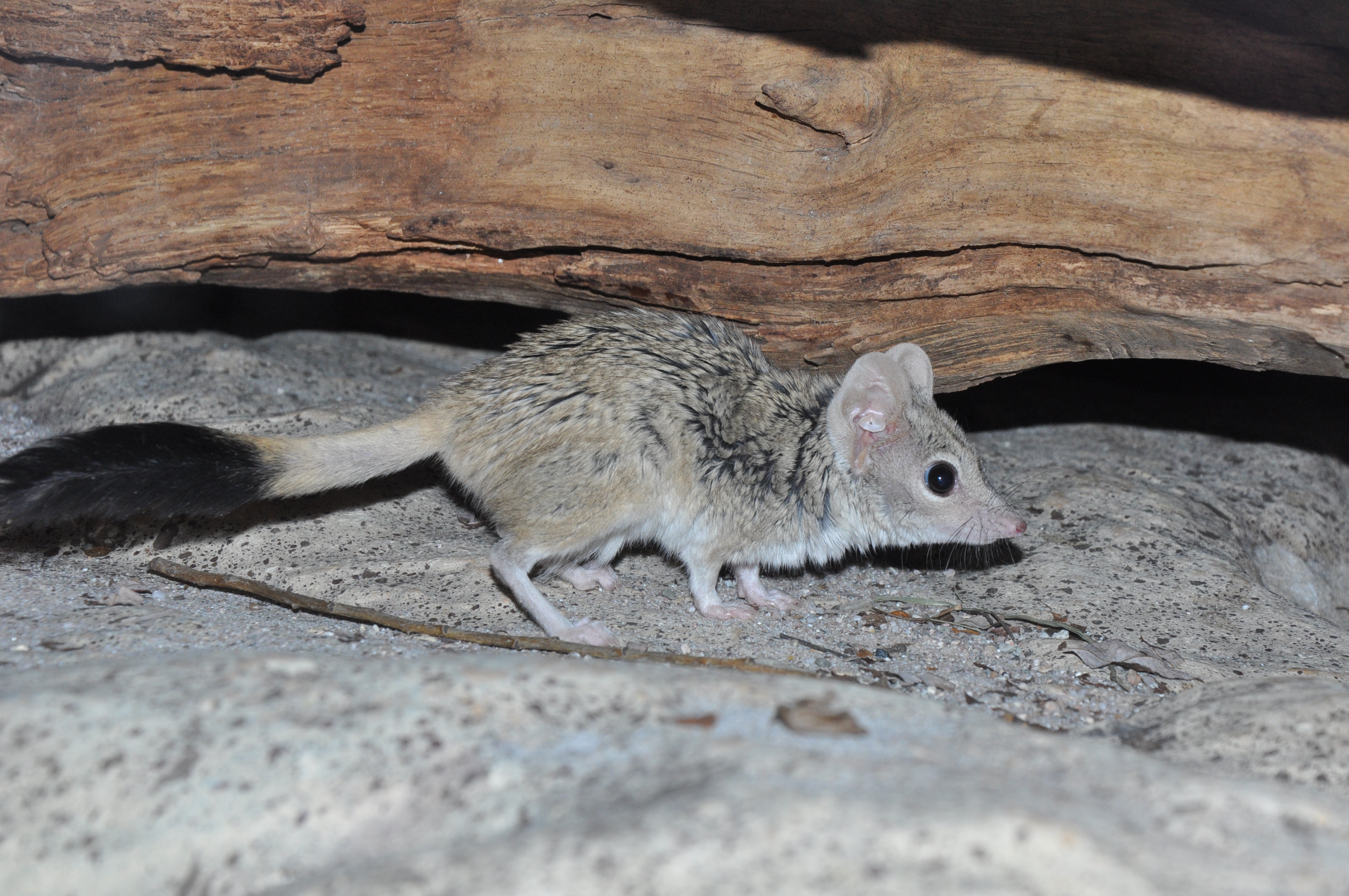
Kowari. Image credit: Elias Neideck, Creative Commons
Though much of the ecoregion remains relatively intact, native habitats and species are impacted by overgrazing by feral camels, horses, goats, and rabbits, as well as weeds, including African boxthorn (Lycium ferocissimum), African love grass (Eragrostis curvula), and Athel pine (Tamarix aphylla). In the Stony Plains area, mining that removes the protective stony cover results in heavy soil erosion during rare rains. Key Biodiversity Areas include Bulgunnia and Witjira National Parks. Key waterholes for wildlife are damaged in the process.
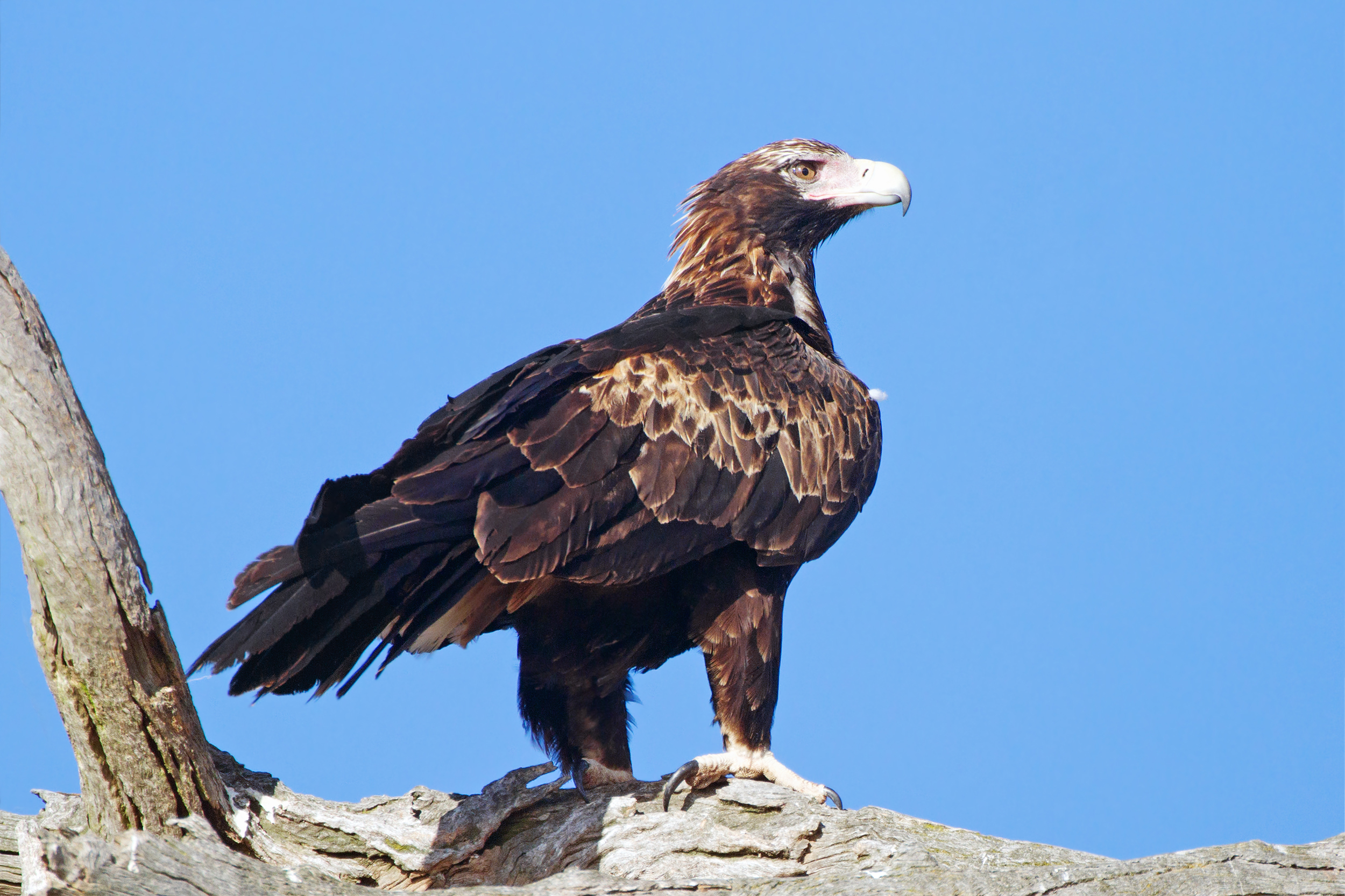
Wedge-tailed eagle. Image credit: JJ Harrison, Creative Commons
The priority conservation actions for the next decade are to 1) implement a Biodiversity Management Plan developed by the SA Arid Lands (SAAL) Natural Resource Management Board in collaboration with the SA Department for Environment and Heritage; 2) develop projects with indigenous people to reduce commercial activities in vulnerable desert ecosystems, for example, the ’10 Deserts Project;’ and 3) continue efforts to eradicate and control feral goats and rabbits and reduce the impact on the vegetation and soils around key waterholes and gilal.
